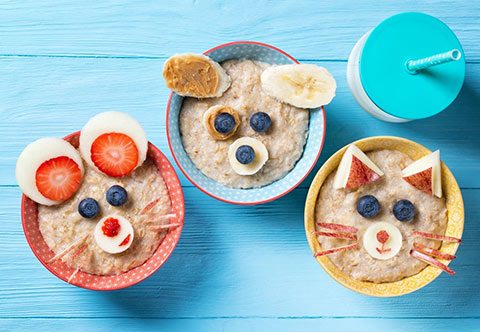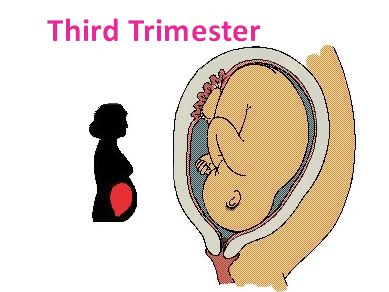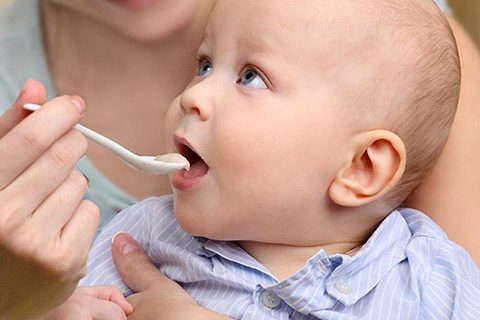How to prepare for breastfeeding
 During your pregnancy, your breasts will undergo certain changes whether or not you intend to breastfeed. Some women experience a period of breast tenderness, and many notice breast enlargement. Women with any size or shape of breasts can successfully breastfeed. There are several things you can do to prepare yourself and your body for these changes and for breastfeeding.
During your pregnancy, your breasts will undergo certain changes whether or not you intend to breastfeed. Some women experience a period of breast tenderness, and many notice breast enlargement. Women with any size or shape of breasts can successfully breastfeed. There are several things you can do to prepare yourself and your body for these changes and for breastfeeding.
Towards the end of your pregnancy, you may experience some leakage of colostrum (the first type of milk your body makes). The following is a list of recommendations that we feel will best help you to prepare for breastfeeding before the baby is born.
- Create a supportive environment. While choosing an obstetrician, pediatrician, nurse practitioner, or family practitioner is important for many reasons, be sure that the one you choose is supportive of and enthusiastic about your choice to breastfeed and will be able to answer your questions. Talk with the doctor about your plans to breastfeed. When you decide to nurse you should tell your healthcare provider so that he or she does not give you medication to stop the milk production is your breasts.
- You should also ask your healthcare physician to put you in contact with a group or at least give you some information on how to breastfeed. That way when the time comes you will already know what to expect.
- Educate yourself. While breastfeeding is supposed to be one of the most natural things a mother can do, that doesn’t mean that it always comes naturally. Any woman planning to breast-feed for the first time can benefit from reading about breastfeeding, taking birthing classes that teach breastfeeding techniques (especially when first starting), and making sure that they receive care and will deliver in an environment supportive of breastfeeding. Educate yourself about the risks involved in the use of infant formulas, artificial nipples, nipple shields and pacifiers.
- Attend childbirth preparation classes and seriously consider having an un-medicated birth.
- Learn how to avoid sore nipples through correct positioning and latching techniques.
- Know how often to expect your baby to breastfeed and how to tell if your baby is getting enough milk.
- In the past, mothers were recommended to “toughen up” the nipples in preparation for nursing, many experts now agree that this is not necessary and may cause uterine contractions that can stress the baby. Also you should avoid use of soaps and other irritating agents on your nipples during pregnancy.
- Flat or inverted nipples. Some women have nipples that do not stick out, or even pull in at the center despite stimulation. Women with flat or inverted nipples can breastfeed successfully even if nothing is done about them during pregnancy. However, there are some very simple interventions that include the use of breast shields or a simple massage technique (called the Hoffman Technique) that can help prevent unnecessary frustration with breastfeeding when the baby is born. If you suspect that you have inverted nipples, check with your health care provider.
- Plan to commence feeding as soon as possible after birth.
- Buying bras. If your breasts enlarge during pregnancy, do not hesitate to buy bras with larger cup sizes. Remember that comfort is as important as support, and be aware that your breast size may continue to increase as your milk comes in once your baby is born and you begin nursing. For this reason, limit the number of nursing bras you buy towards the end of your pregnancy to just 2 or 3 until you have begun nursing and determine which bra is most comfortable.
- Purchase nightgowns that are convenient for breastfeeding and clothing that is conducive to discreet nursing.
- Establish one or more convenient “breastfeeding corners” which have a comfortable chair, footstool, extra pillows and table.
All of these measures can have a great impact on how successful you will be right from the start.
Why it is important to prepare for breastfeeding?
Your breastmilk is an amazing, precious and complex liquid. To date researchers estimate that there are over 200 hundred different components that make up human breastmilk.
- Your breastmilk is constantly changing to meet your baby’s needs. It literally changes from feed to feed, from day to day, from week to week. The best way to see this is to look at the colour of your breastmilk and you will see that it even changes colour, from shades of cream , to white, to a blue-ish tinge, sometimes even green-ish tinge!
- Your breastmilk is unique to you and your baby – it is the very definition of exclusive. Many of the wonderful components of human breast milk cannot be replicated in artificial milk.
- Your breastmilk is the perfect food for your baby – the perfect match for your baby. In fact, it matches more than 50% of your baby’s genetic material (of course! because the baby is 50% you!)
- Your first milk (colostrum) is fantastic for protecting the vulnerable baby from bacteria and possible infections once it is outside of the womb. Breastmilk has very high immunoglobulins, white cells and lactoferrin which put a protective seal along the intestines to proctect the baby from bacteria. These and many other infection fighting properties are present in breastmilk every time you feed your baby.
- Your colostum also has high levels of a pain-relieving hormone called beta-endorphin. One purpose of this hormone is to help the baby recover from the stress and discomfort of the birth.
- Every time you breastfeed your body produces the hormone oxytocin to help you feel calm and connected to your baby. Your baby also receives some of this hormone.
- Many of the components of your breastmilk do more than one job. For example alpha-lactalbumin which is a protein also organizes milk supply and prevents infection by killing bacteria and can also kill cancer cells when placed with them in a test tube. Alpha-lactalbumin is not found in artificial milk.
- Breastfeeding is more than the sum of its’ parts and breastmilk is more than superior nutrition. For both mother and baby breastfeeding is also the enjoyable experience of connection, nurture and love.






